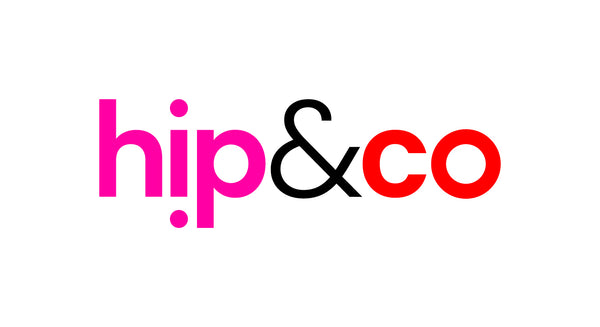Adde, our second child, was just over 6 months old when we became conscious of a clunking sound and feeling whilst handling her. We thought we were imagining it, especially considering I had watched the doctors do their routine hip assessment multiple times since her birth, without any mention of concern. But my worry grew with every increasing clunk, so I drove the four hours between Sydney to Port Macquarie where my father works as a GP. I vividly remember little Adde’s oblivious, smiley face as she lay on the bed and dad did the routine hip assessment. Both hips easily dislocated. Addelyn was sent for her first hip X-ray.
Back in Sydney, dad called with the X-ray results that would introduce us to the completely foreign world of hips: her acetabulum bilaterally was very shallow. The left acetabular angle was 43 degrees, and right angle was 45 degrees. (At that stage of Adde’s hip journey, I had no idea what any of the medical language meant, but over the next few years, we sweated in anticipation that those hip angels would decrease with every routine x-ray). There was less than 30% coverage of the femoral head, bilaterally, and no ossification on the femoral capital epiphysis on either side. Our orthopaedic surgeon confirmed that Adde had a severe case of bilateral hip dysplasia, with no signs of femoral head growth. In his own (unfiltered!) words, “hmm, rotten hips, you’re in for a long, hot summer”.
Meanwhile, the surgeon handed me a precautionary X-ray referral for my 2-year-old son, just to make sure he also wasn’t another case of undiagnosed DDH. A day later we received more unwelcome news. While my son didn’t have DDH, the scan revealed Perthes Disease, meaning his left femoral head was effectively disintegrating. Within two days, we had discovered both our children were harbouring hidden hip issues.
Hip Dysplasia was never a red flag for us - we have no family history, Adde wasn’t breech or transverse, and she wasn’t a first born. The only contributing factor - like 50% of the population, she was born female.
At 7.5 months of age, Adde emerged from closed reduction surgery in a purple nipple-to-toe spica cast, which she remained in for almost three months, over a particularly hot Australian summer. She slept very poorly during these months, waking every 90 minutes throughout the night. I never quite knew if she was in pain and discomfort from her cast, or if it was from the relentless teething that also took place over this time, or the frustration of being immobile when her little brain just wanted to learn to crawl. And crawl she did - dragging along her heavy cast across the wooden floorboards, Adde’s determination inspired us all. My husband ended up fitting her cast with felt pads to protect the floorboards from being scratched! Although she continued to smile and take it all in her stride, as her parents, every day became an endurance content as we tried to keep her clean (without a bath), cool, comfortable and stimulated. There’s no manual for caring for a spica baby.

After her spica’s removal, Adde was transferred to a Denis Browne Bar (DBB) brace for 23 hours a day for a further 8 months. I packed away all the gorgeous dresses and clothes I had longed to see my baby girl in, but conceded would never be practical with a hip baby. X-ray result time swung around again: due to her late age in diagnosis, she had little progress and needed to remain in the DBB for further 6 months for 10 hours a day. By the time Adde was just over two years old, she had spent three months in a spica and 14 months in a brace. We anxiously awaited new X-ray results: all treatment had failed. Adde would now need a last resort intervention - a double pelvic osteotomy.
At age two and a half, Adde underwent back-to-back pelvic osteotomies, in record surgery time and with minimal bleeding. We now had a giant, active toddler in a huge, heavy, rigid plaster cast. But when a friend lent us a spica table, this became a game changer for entertaining her. I credit her exceptional fine motor skills and pencil grip to all the time she spent sitting at her table scribbling away over the next 6 weeks of recovery.

Today, Addelyn is five years old. She loves ballet, taekwondo, swimming, and chasing her brother and younger sister. She is fiercely independent, strong willed and playful. She talks about her “purple legs” as if everyone had them growing up. She has two very faded scars that she was oblivious to until I recently pointed them out. Most recently she has been a big help to her younger sister Emily, who also received a late diagnosis of bilateral DDH at age 1, despite our every effort to take extra precautions given our experience with Addelyn. But, just to keep us on our toes, Emily is an example of the reason why the word ‘developmental’ was added to the description of hip dysplasia. She spent three months in a rhino brace, but unfortunately her skin reacted badly to the brace. We’re now back on the hip angle results rollercoaster anxiously awaiting her next round of X-rays in a few months time. But by now, we are experts, and in some way I feel more comfortable parenting a hip baby than a typical developed child!

While we wouldn’t wish our story on others, we have grown enormously throughout our children’s hip journeys. Ours is a temporarily discomfort and inconvenience. We have gained a newfound admiration for parents of children who endure far worse than us, and many on a permanent basis. And while our girls’ resilience continues to grow, we have hopefully become more compassionate people for the experience.
Bronwyn



